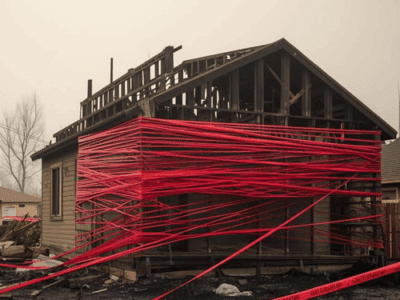How Disaster Response Works
It’s a complex process involving many federal agencies and state government.
When people think of FEMA, they envision rescuers finding victims and taking them to safety. FEMA does provide emergency assistance, temporary housing and other services. But its main job is to coordinate the response of many parts of the federal government. And the federal government’s role itself is mostly supportive, with the main job of emergency response falling on state and local governments.
President Carter created FEMA in 1978 by combining the functions of several different government agencies. Today, its work is governed by the Post-Katrina Emergency Management Reform Act of 2006. It charges FEMA with assisting the President in carrying out his functions under the core federal disaster law, the Stafford Act. FEMA is also charged with “leading and supporting the Nation in a risk-based, comprehensive emergency management system.” FEMA follows a national response framework it issued in 2013. The framework emphasizes that disaster response requires “layered, mutually supporting capabilities of individuals, communities, the private sector, NGOs, and governments at all levels.” Efforts are coordinated through the Incident Command System, including multiple agencies. There are no fewer than fourteen agencies that can be involved in post-disaster response.
First responders are rarely federal — instead, they are state and local personnel who are already on the scene. When the National Guard is deployed to the scene, it too is often under state rather than federal control. Private entities like utility companies also play a key role in restoring power, water, and communications in the aftermath of a disaster.
After Hurricane Katrina, about the only two things that worked well were the Coast Guard and something called EMAC. EMAC stands for Emergency Management Assistance Compact. It’s an interstate agreement that allows other states to shift resources into the impacted state, supplementing that state’s own resources. Much of the work of checking houses for survivors after Katrina was actually performed by these out-of-state workers.
Still, FEMA’s work is essential after a major disaster. Not since Katrina has it faced a challenge like this one. FEMA has improved a lot since the days when President Bush told “Brownie” he’d done “a heck of a job,” just before things really fell apart. By the time of Hurricane Sandy, the agency had learned from Katrina the importance of pre-positioning assets before the storm actually struck and having an early presidential declaration of national emergency. Those lessons have also been followed with Harvey.
FEMA’s post-mortem after Sandy indicated areas of strength and weakness. That was also GAO’s conclusion. In particular, GAO raised questions about whether the agency had followed up on indications of gaps in the response capabilities of some agencies or had sufficiently improved logistics such as its ability to track the location of supplies. The agency had also found room for improvement in several areas such as coordination of federal senior leadership, implementing the incident management system, and connecting planning efforts with operational decision making.
There is little doubt, however, that the response to Sandy was far superior to the federal response to Katrina. Let’s hope it has improved enough to deal with Hurricane Harvey. We will see in the days and weeks to come whether FEMA has maintained (and hopefully strengthened) its capabilities despite changes in Administrations. William (“Brock”) Long recently took over as the head of FEMA. He has extensive disaster response experience in Alabama, at FEMA, and in the private sector. Hopefully, that will allow him to pick up the reins quickly and effectively.







Reader Comments